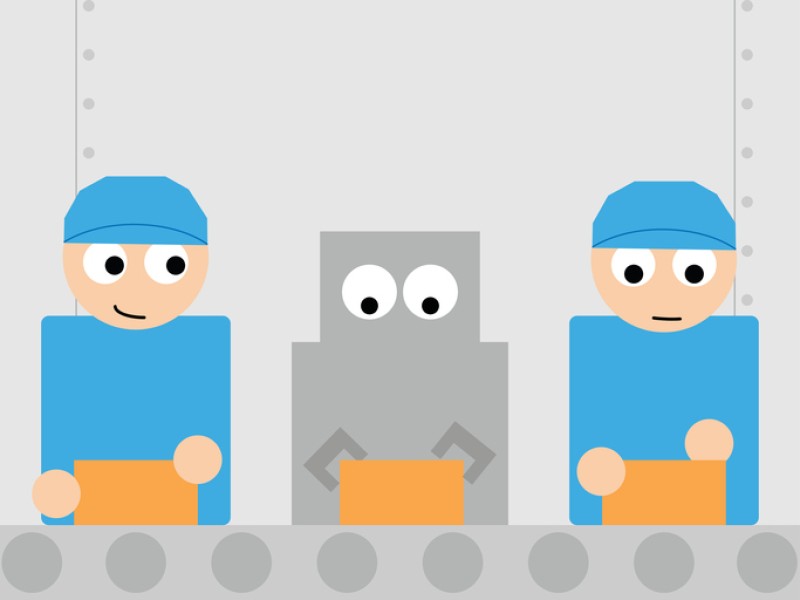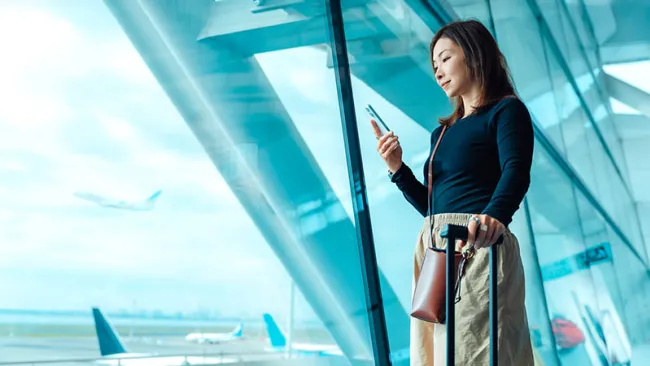Automation is here to stay. Robotics, sensors, artificial intelligence, and cognitive computing are rapidly transforming the job market. Technology trends are leading to the redesign of nearly every job, along with innovative ways of thinking about workforce planning and the nature of work.
The transformation is already underway—an estimated 38 percent of U.S. jobs could be lost to automation in the next 15 years, according to PwC. And 41 percent of U.S. businesses have either fully implemented or made significant progress in adopting cognitive and A.I. technologies, Deloitte reports. Employees are engaging more with “smart” machines as part of their everyday activities.
So what does this mean for human employees and the customer experience? Just as the workplace is shifting, so too must the approach to building a strong culture when robots and humans work side by side.
A new normal
Automation is not a question of “if,” it’s “how much and how fast?” Automated activities enable businesses to improve performance by reducing errors and costs while improving quality, speed, and in some instances, achieve outcomes that exceed human capabilities. McKinsey Global Institute estimates automation could raise productivity growth globally by 0.8 to 1.4 percent annually.
McKinsey also found that very few occupations—less than 5 percent—are candidates for full automation. Instead, nearly every occupation has partial automation potential, meaning a proportion of its activities could be automated while still needing human input. People won’t disappear. As a result, a concerted effort to keep a positive workplace culture in the age of automation will help keep employees focused on productivity and delivering great experiences.
“Executives tend to look at things in a rational way to get from point A to point B,” says Tommy Perkins, TeleTech consulting director of the Americas. “But they often overlook the emotional aspect of their decisions and how it impacts their employee base.”
In a recent survey from Capita Resourcing, 67 percent of employees say they fear that the rise of robotics will make the workplace less sociable and friendly in the future. The biggest concerns are around introducing more automation in the workplace were the loss of their job (36 percent), losing the social relationship with colleagues (27 percent), and having to re-skill/train to do another job (23 percent).
Transparency and communication are essential components of a successful change management strategy, Perkins says. Telling employees that an automated solution will save money is not enough. Explain to employees, for example, how automating parts of the workflow could make the company more competitive and allow it to continue operating. Also discuss the direct benefits to employees, such as time saved, added safety, or more interesting work. Additionally, use multiple channels to make sure the message reaches employees. In addition to email, schedule video chats, and information sessions that allow employees to ask questions. “As a leader, you have to paint a vision for your employees and help them understand why this change will be beneficial for them and the company,” Perkins says.
Automation isn’t always a direct path to cost savings and higher revenues. Companies must weigh the costs of adopting new technology and replacing human interactions with automated ones, points out David Brancaccio, the host of American Public Media’s Marketplace Morning Report. Brancaccio’s new series, “Robot-Proof Jobs,” investigates automation’s impact on jobs and how humanity and creativity are irreplaceable in the workplace.
“Just because you can automate something doesn’t mean you should,” says Brancaccio. “In some cases, implementing a new machine or software may not be cost effective at all.” Companies must also consider how their customers will react to an automated interface, he adds. Some customers may prefer to speak with an associate.
No industry is immune to automation, but they must tread lightly. Here are some examples of how companies in the insurance and travel industries are striking a balance between humans and their automated counterparts to deliver a superior customer experience.
The changing face of insurance associates
The days when policyholders spoke face-to-face with an insurance associate who handled all of their needs are quickly fading. Increasingly, customers are looking up quotes themselves and using other self-service options. Esurance, for instance, has introduced a DIY home inspection app, which allows policyholders to record videos of their homes and apply for policy discounts. Policyholders can also save video clips on their phones for claims evidence. This reduces the need for as many human claims adjustors. While automation is a great option, esurance still gives customers the option of speaking with human associates, especially for highly charged or complex interactions.
While property & casualty (P&C) insurance carriers face growing pressure from consumers to modernize and simplify their services, a number of hurdles limit their ability to quickly provide the digital experiences that consumers want. In particular, a report by Majesco contends that insurance carriers are struggling with staff shortages and issues modernizing their technology.
Automation can help mitigate these issues, leaving human employees to best use their skills in critical thinking, says Brett Santoferraro, a senior project leader at Amend Consulting. Retraining employees to work alongside new machines is essential, he says. It’s helpful, for example, to appoint an in-house expert to be involved with the system implementation process to understand how the software works and “speak the language of the vendor” when issues arise.
Also, even if an automated system is replacing work that was formerly handled by humans, such as processing insurance claims or researching fraud, humans are still needed to feed it with data and review its results. “Humans are still needed to keep the automated process running smoothly,” Santoferraro says.
By the same token, insurance companies must reassess their compensation models to account for these changes in employee jobs, says Luke Kinton, a sales coach and consultant at ChooseLuke.com. “Insurance associates don’t get paid for the service side of things,” he says. “They don’t get a check just for providing customers with an informative answer or making sure a machine is running.” If customers can purchase policies themselves, but associates are on hand to answer complicated questions, “companies need to figure out how to accurately compensate people for the work they’re doing [alongside robots].”
Transforming travel (again)
The first wave of automation that affected the travel agency market was transactional—online companies gave consumers direct access to a reservations database. The next wave of automation goes one step further, using artificial intelligence to replace travel associates with personal travel tools that sift through mountains of data to give users curated advice on how to plan their trip.
That is the goal of startups like 30SecondsToFly. “We’re building software that replaces the role of the travel manager,” says Co-founder and CEO Felicia Schneiderhan. “We’re building an A.I. assistant called Claire that acts like a savvy travel manager within a company’s team.”
Users can ask Claire over chat to help them book a flight by telling her where they would like to go, at what time, and when they want to return. By connecting with the company’s travel policies, Claire will pull up potential flights and descriptions for the user to select. Claire also provides notes, such as whether a flight would allow the user to collect mileage points. On the backend, Claire keeps track of the employees’ travel selections to personalize future flight options and identify cost-saving opportunities.
“Our vision is to eventually make Claire proactive so that she can inform a CEO, for instance, that she’s noticed the company is spending more on international long distance flights and offer suggestions like adjusting the policy to only allow business class flights that are less than eight hours,” Schneiderhan says. The company also plans to integrate Claire with databases in other departments, like HR, to provide more detailed information.
Despite these advances in software, Schneiderhan admits there’s still a need for human associates to provide backup. “It’s unrealistic to expect artificial intelligence to reliably automate 100 percent of the transactions,” she says. “There will always be cases where humans may be needed to handle complicated use cases or an unusual trip request.”
Schneiderhan predicts more companies will introduce a type of workflow where specialists are trained to monitor bots that handle routine requests and are prepared to jump into the conversation if the bot gets stuck. And data from the Bureau of Labor Statistics shows an upward trend in human travel professionals. In 2016, 68,680 travel associates were employed, up from 64,680 in 2012. There’s still an obvious need for human support, even if day-to-day activities are different than in the past.
So it’s not a question of if, but how quickly will artificial intelligence and automation transform industries and workers’ jobs. If businesses are serious about meeting their customers’ needs, they also need to be serious about maintaining a culture where humans work in harmony with automated systems. Creating a balanced culture of automation and human capabilities will best serve consumers and provide a great place for employees to work.















